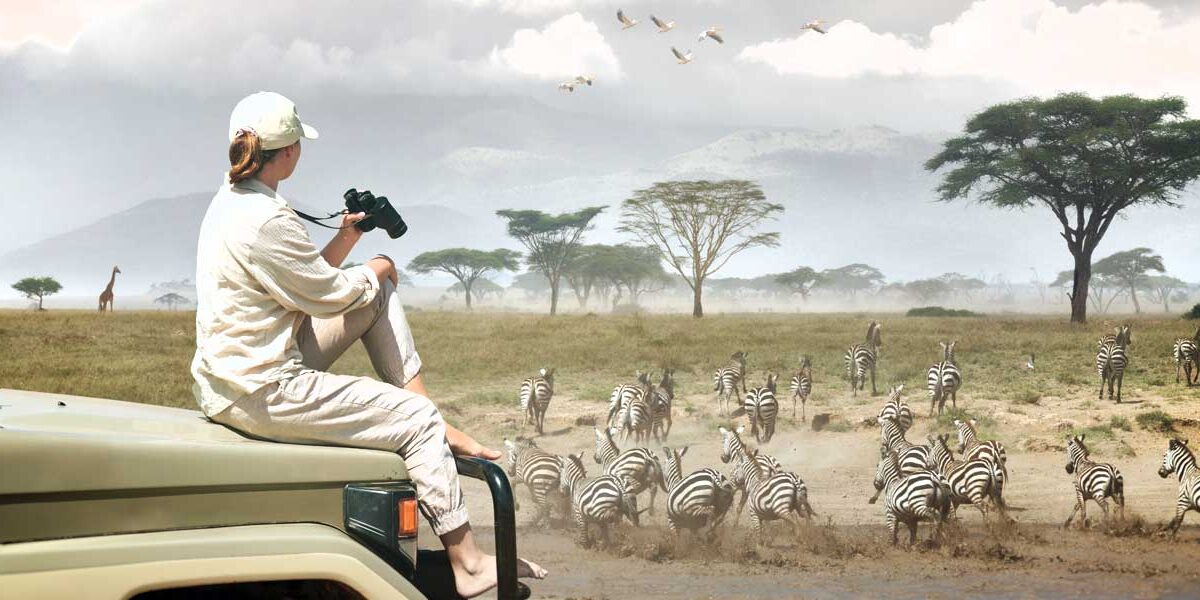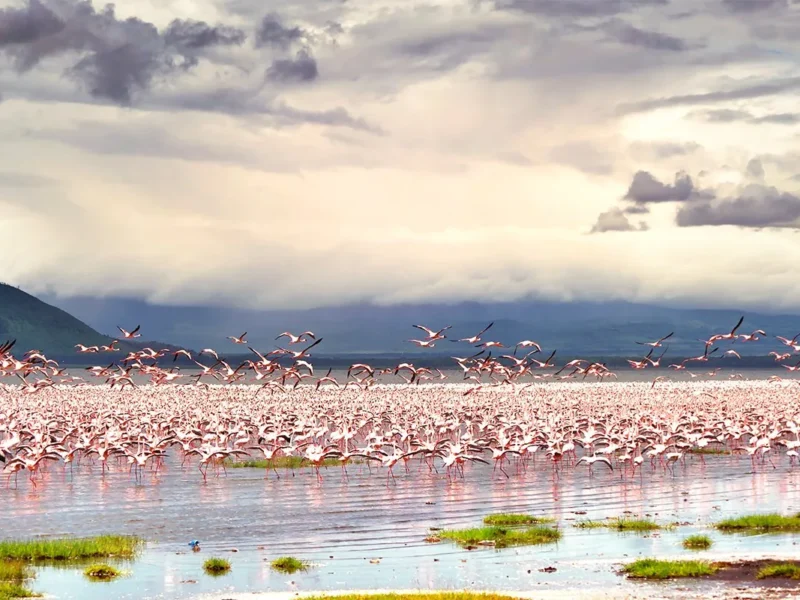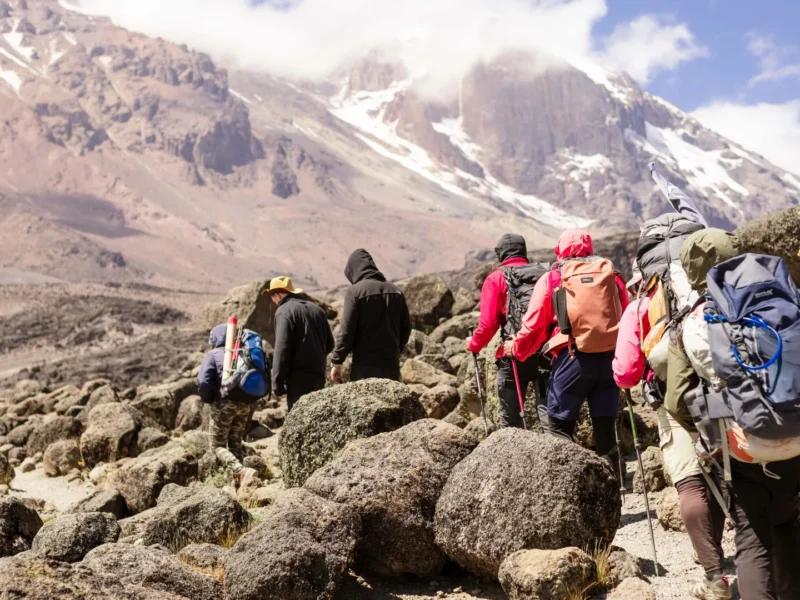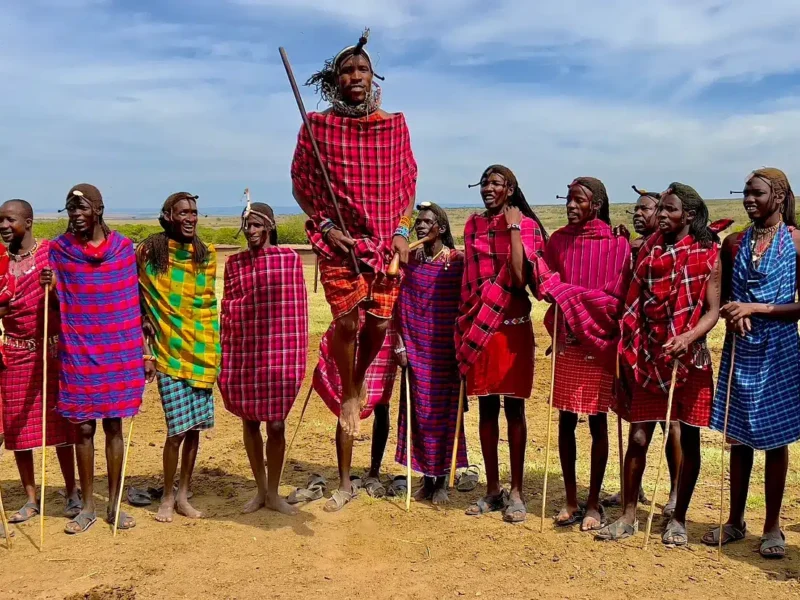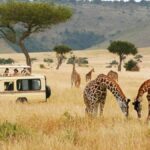
The Best Places for Game Drives in Uganda: Discover the Pearl of Africa’s Wildlife
October 16, 2025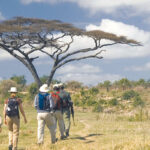
Walking Safaris in Kenya
October 22, 2025What Animals to See on a Game Drive: A Wildlife Enthusiast’s Guide
A game drive is one of the most thrilling ways to experience the wild. Whether you’re exploring the vast savannahs of East Africa, the bushveld of Southern Africa, or the dense jungles of Central Africa, the anticipation of encountering wildlife in its natural habitat is unmatched. But what exactly can you expect to see on a game drive?
Here’s a guide to some of the most iconic and fascinating animals you might encounter during your safari adventure.
1. The Big Five
Originally coined by big-game hunters, the “Big Five” refers to the five most difficult animals to hunt on foot. Today, they are the most sought-after wildlife sightings on any game drive.
- Lion – The majestic king of the savannah, often seen resting in the shade or on the prowl in the early morning or late evening.
- Elephant – Africa’s gentle giant, often spotted in herds near water sources or slowly crossing the plains.
- Leopard – Elusive and solitary, leopards are masters of camouflage. Look for them lounging in tree branches or sneaking through the grass.
- Buffalo – Don’t be fooled by their cattle-like appearance; African buffalo are powerful and unpredictable, often seen in large herds.
- Rhinoceros – Depending on the region, you might see black or white rhinos. Their numbers are fewer, so spotting one is a special moment.
2. Other Common Safari Sightings
While the Big Five are a major draw, many other animals contribute to the richness of the safari experience.
- Giraffes – Towering and graceful, giraffes are hard to miss as they munch on acacia trees or move across the horizon in small groups.
- Zebras – Their black-and-white stripes make them stand out in the grasslands, often seen in mixed herds with wildebeest.
- Wildebeest – Especially during the Great Migration in East Africa, wildebeest are a spectacular sight in the millions.
- Hippos – Often spotted lounging in rivers or lakes during the day, hippos are surprisingly aggressive and territorial.
- Crocodiles – Frequently seen basking on riverbanks, crocodiles are a reminder of the raw power of Africa’s waterways.
- Hyenas – Known for their eerie calls and scavenging habits, hyenas are social and fascinating creatures to observe.
3. Primates on Safari
Some parks also offer the chance to see various primate species:
- Baboons and Vervet Monkeys – Common in many parks, these intelligent animals are often seen near roads or camps.
- Chimpanzees – Found in forested reserves like Kibale Forest in Uganda or Mahale Mountains in Tanzania.
- Gorillas – While not typically seen on game drives, gorilla trekking in places like Bwindi Impenetrable Forest or Volcanoes National Park is a bucket-list experience.
4. Birds and Smaller Creatures
Bird lovers will find game drives equally rewarding, with hundreds of species visible depending on the location and season. From colorful kingfishers and bee-eaters to powerful eagles and the iconic African fish eagle, birdwatching can be just as captivating as big game viewing.
You might also spot:
- Warthogs trotting with their tails up
- Jackals, mongooses, or even porcupines in early morning or night drives
- Monitor lizards basking on rocks
- Meerekats in certain southern African parks like the Kalahari
Tips for the Best Game Drive Experience
- Go early or late: Wildlife is most active during the cooler hours of dawn and dusk.
- Bring binoculars: Spotting smaller or distant animals is much easier.
- Listen to your guide: They’re experts at reading tracks, sounds, and signs that lead to sightings.
- Be patient and quiet: The bush reveals its secrets to those who wait and watch.
Conclusion
A game drive is more than just a sightseeing tour it’s a journey into the heart of nature. From iconic predators to curious primates and brilliant birds, every drive offers a chance to witness the wonders of the wild. Whether it’s your first safari or your tenth, the excitement of not knowing what’s around the next bend never fades.
So buckle up, keep your camera ready, and let nature surprise you.

